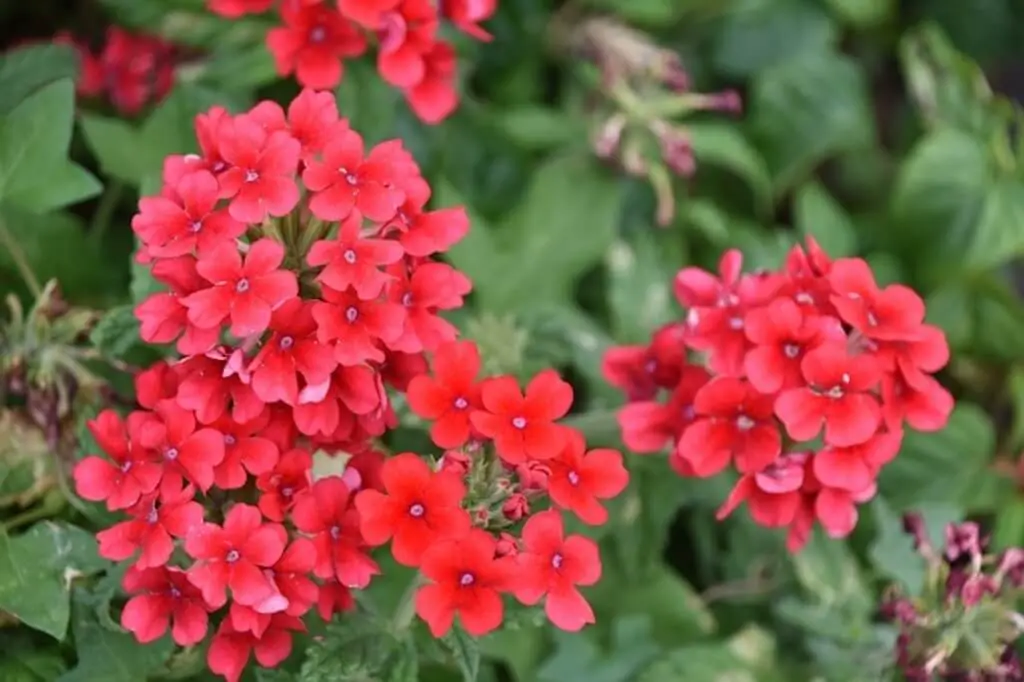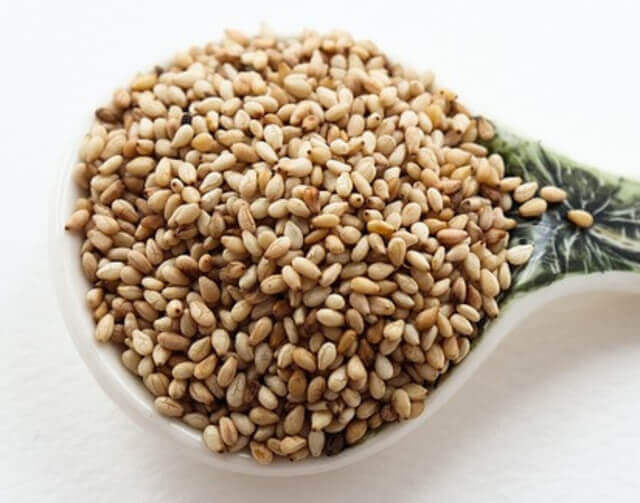19 Herbs and Spices that Start with S
Herbs and spices are a staple in most households. They are typically used to add flavor to food, but they also have other benefits, such as for natural remedies or for medicinal purposes. Let’s take a look at some herbs and spices that start with s.
Table of Contents
- 1 Herbs and Spices that Start with S
- 1.1 Safflower (Carthamus tinctorius)
- 1.2 Saffron (Crocus sativus)
- 1.3 Sage (Salvia officinalis)
- 1.4 Salad burnet (Sanguisorba minor)
- 1.5 Salep (Orchis mascula)
- 1.6 Sassafras (Sassafras albidum)
- 1.7 Sesame Seed (Sesamum indicum)
- 1.8 Savory, summer (Satureja hortensis)
- 1.9 Savory, winter (Satureja montana)
- 1.10 Shiso (Perilla frutescens)
- 1.11 Silphium (also known as laserwort, silphion, or laser)
- 1.12 Sorrel (Rumex acetosa)
- 1.13 Sorrel, sheep (Rumex acetosella)
- 1.14 Spearmint (Mentha spicata)
- 1.15 Spikenard (Nardostachys grandiflora)
- 1.16 Star anise (Illicium verum)
- 1.17 Sumac (Rhus coriaria)
- 1.18 Sweet woodruff (Galium odoratum)
- 1.19 Szechuan pepper, Sichuan pepper (Zanthoxylum piperitum)
- 2 Author
Herbs and Spices that Start with S
Safflower (Carthamus tinctorius)
The safflower plant, Carthamus tinctorius, is a drought-resistant crop that has been cultivated in the Mediterranean region for thousands of years. It was an important part of the ancient trade routes from Asia to Europe and North Africa. It was first used as a textile dye and then, later on, the oil from its seeds were processed to make food.
This plant is not very well known today because it’s considered to be a crop that can only grow in drier climates. However, there are still many countries in Africa and Asia where safflower cultivation is profitable enough to have sustainable yields year after year.
Saffron (Crocus sativus)
Saffron is a spice derived from the flower of Crocus sativus, commonly known as the saffron crocus. It has been used for medicinal and culinary purposes for over 3,000 years. The plant is cultivated in many countries around the world, with Iran being its largest producer. Other major producers include India, Spain, Afghanistan and Australia.
It is one of the most expensive spices in the world due to labor-intensive harvesting procedures, but it’s also now considered a “superfood” because it contains compounds that may have benefits such as relief from depression and Alzheimer’s disease.
Sage (Salvia officinalis)
Sage is a herbaceous perennial plant that can grow up to 2 feet tall. It has oval leaves, and it flowers in mid-summer with showy lavender or white blooms. Sage was originally cultivated by the ancient Greeks and Romans for its medicinal properties. In medieval times, sage became an important part of European cuisine as well.
Today, there are many types of culinary uses for this versatile herb, from soups to desserts like pumpkin pie spice! Its leaves are usually dried, which means it is often used to flavor dishes. It also contains high levels of essential oils, minerals, and vitamins that can help boost the immune system.
Related Post:
- 50 Fun Facts About Sage (with Photos & Details)
- How to Grow Sage at Home? A Step-by-Step Growers Guide
Salad burnet (Sanguisorba minor)
Salad Burnet is a common herb that can be found in gardens across the world. This perennial herb has been grown for centuries and used for both culinary and medicinal purposes. It grows in clumps with delicate stems and leaves, as well as many small red flowers.
The plants thrive even in poor soil conditions, and it makes an excellent companion plant for other vegetables like tomatoes, carrots, potatoes, beans and peas by repelling insects that can damage these crops. It is typically eaten raw on salads or sandwiches because of its tangy flavor, but it also goes well with meat dishes like sausage, ham, and chicken.
Salep (Orchis mascula)
The ancient herb salep is a type of orchid. The plant has been around for centuries and was originally used to make a drink, which could have health benefits. Salep (Orchis mascula) is an old type of orchid that people used to use as the main ingredient in their favorite drink – salep.
In some cultures, it’s considered more than just a beverage; they also believe it can help with diabetes, heart disease, weight loss and other ailments because of its high potassium and low-sugar content.
Sassafras (Sassafras albidum)
Sassafras is a genus of three species in the Lauraceae family. They are found primarily in eastern North America, although one species also occurs in parts of Southeast Asia and South America. The most commonly used part of the plant is its root bark which has been traditionally used for treating common colds, toothaches, fever, headaches and as an expectorant to loosen mucus from chest congestion.
More recently it has been discovered that sassafras oil can be extracted from the roots and used as a flavoring agent for food, drink, medicines and fragrances.
Sesame Seed (Sesamum indicum)
Sesame seeds are a type of seed that come from the plant called Sesamum indicum. They have been cultivated for more than 4,000 years and can be found in many countries around the world. These plants thrive in dry climates and can grow up to 3 feet tall when fully grown. The leaves are dark green with hairy undersides and flowers on short stalks or stems at the top of the plant, which produce small round fruits that contain one or two seeds inside them.
The main producers of this seed are India, China, and North Africa. These seeds can be ground into flour for baking, added to curry dishes, sprinkled over roasted vegetables or added to coffee. Sesame seeds contain many nutrients such as calcium, protein, magnesium and iron.
Savory, summer (Satureja hortensis)
Savory is a member of the mint family and has been used as a spice for centuries. The most common form is summer savory, which can be found in North America from June to September.
It is native to Europe and grows best in full sun with well-drained soil. This plant produces an aromatic, piney flavor that goes great with tomatoes or beans and pairs well with meats such as pork or beef when cooked together.
Savory, winter (Satureja montana)
Savory is a perennial herb that grows throughout the Northern Hemisphere. The leaves are small and can be either bright green or gray-green in color, depending on the variety. Savory tastes peppery, spicy, or slightly sweet with a hint of citrus flavor.
It’s most often used as an ingredient in soups and stews to add depth of flavor to the dish. The plant can grow up to three feet tall and has delicate flowers which appear from July through September.
Shiso (Perilla frutescens)
Shiso (Perilla frutescens) is a member of the mint family. This herb has an affinity for Asian cuisine, and it is used in many dishes including soups, stir-fries, sauces, salads and pickles. The leaves are dark green with serrated edges, and they grow on purple stems. There are three varieties of shiso: plain leafed, large leafed, and red leafed.
The plants produce yellow flowers which bloom from July to September, and they have a delicate scent. Shiso is native to Japan, where it has been used for centuries in cuisine but also as a herb in traditional medicine. This member of the mint family thrives best in full sun or light shade, with moist soil rich in organic matter and good drainage.
Silphium (also known as laserwort, silphion, or laser)
The silphium plant was a rare herb that grew in Ancient Greece. It had many uses, including as an appetite suppressant and for women’s reproductive health. The Greeks used it to treat coughs, asthma, stomach problems, fever and inflammation.
Silphium has been extinct since the 1st century AD, when it became too difficult to cultivate because of over-harvesting by Roman troops stationed in North Africa during the height of their empire. Its most important use to the ancient Greeks was as a condiment for seasoning their food.
Sorrel (Rumex acetosa)
Sorrel is a perennial herb in the genus Rumex, and it is one of the most popular herbs in French cuisine. The plants grow to about 30-60 cm tall, with upright stems that often sprawl along the ground. The leaves are variable in shape but usually broad or ovate (heart shaped), up to 12 inches long, glossy green on top and lighter underneath.
It has reddish veins beneath because of its high levels of iron; when cooked, these turn dark brown. Sorrel has a tangy lemony flavor and is often used in salads, soups, sauces, fish dishes and in omelets.
Sorrel, sheep (Rumex acetosella)
Sorrel is a weed commonly found in the western United States. The leaves are edible raw or cooked, and have been used for centuries as food. It has also been used to make medicine by herbalists since ancient times. The plant can be identified by its spade-shaped leaves and bright green color.
It grows abundantly in high altitude regions, making it difficult to grow crops or graze animals during the summer months. Sorrel will also thrive under cultivation with frequent irrigation and fertilization due to its rapid growth rate.
Spearmint (Mentha spicata)
Mentha spicata, also known as spearmint, is a common herb with several rare benefits. Spearmint has been used for centuries to treat indigestion and nausea; it is believed that the aroma of spearmint helps stimulate saliva production and release gastric juices in the stomach. Spearmint can also be used to relieve pain caused by muscle cramps or headaches.
The leaves are crushed and applied directly to the area in need of relief. The plant’s leaves are often used in cooking or baking as they add flavor and aroma to foods such as lamb dishes, pork, vegetable soups, and breads.
Spikenard (Nardostachys grandiflora)
Nardostachys grandiflora, also known as spikenard or nard, is a perennial herb in the Valerian family. It grows to about 2 meters (6 feet) and has an aromatic scent with sweet floral notes. The plant’s rhizomes are used for making incense and perfumes; its roots have been used medicinally since ancient times.
It has also been used for centuries in traditional medicine to help treat various health conditions such as asthma, eczema, and other skin disorders. The scent of spikenard has also been traditionally used as an aphrodisiac and sedative by many cultures. The name “spikenard” comes from the Latin word nardo which means “nard.”
Star anise (Illicium verum)
The small star-shaped spice with a flavor reminiscent of anise is native to the Eastern Hemisphere. The aromatic seeds are enclosed in capsules and typically have one point at the end that’s often green, brown or black.Star anise is a spice that can be used in many different ways. It has a sweet, licorice-like flavor and aroma which it gets from the chemical compound called shikimic acid.
Star anise has been used for thousands of years as both food and medicine by cultures around the world. Today, star anise is most commonly found in cooking to add flavor to dishes like meat stews or curries but also on top of rice cakes or sprinkled over fruit salads.
Related Post: 80 Fun Facts About Anise (with Photos, ID & Info)
Sumac (Rhus coriaria)
Sumac is a flowering plant that grows in dry, sunny areas. Native to North America and Eastern Asia, it is most commonly found in the Middle East and Northern Africa. It can be consumed raw or cooked and has many health benefits, making it an unsung superfood.
The sumac tree’s berries are often ground into powder for use as spice on dishes such as shawarma (spiced meat) and labneh (strained yogurt). flavor has been savored for centuries. Sumac berries can be ground into a powder, which is used to flavor dishes such as shawarma and labneh. In these cultures, its flavor has been savored for centuries.
Sweet woodruff (Galium odoratum)
Sweet woodruff is a perennial plant that has been used for centuries in Europe as an herbal remedy. The name “sweet” refers to the sweet, pleasant odor of the crushed leaves and stems. The plant’s scent can be smelled by breaking off a few leaves or crushing them with your fingers.
The herb is found in moist woods and clearings, often on calcareous soils rich in limestone near streams or springs, but it also grows on dryer sites where little else grows. This plant has a rich history in folk medicine and magic, as well as modern herbalism.
Szechuan pepper, Sichuan pepper (Zanthoxylum piperitum)
Szechuan pepper (Zanthoxylum piperitum) is a flowering evergreen tree found in the southern Sichuan province of China. This spice has been used for centuries by those in medieval Europe due to its distinct flavor profile.
Its flavor has been described as slightly citrusy with hints of anise, giving it a distinct aroma when ground into powder form. There are many benefits to using this spice, such as its ability to prevent weight gain and even reduce appetite.










